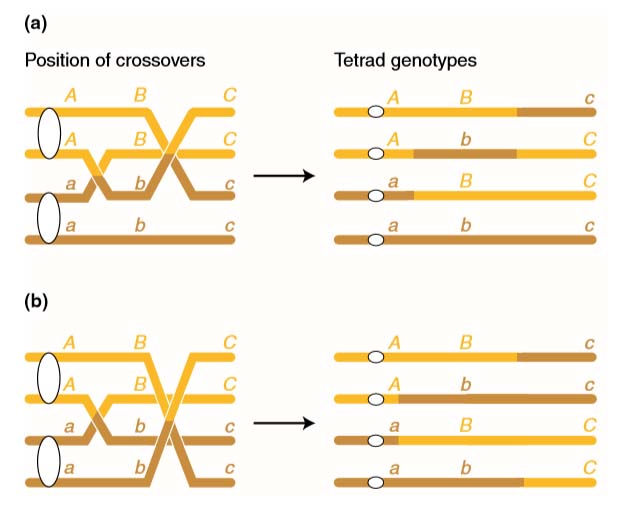Tetrad analysis can also show two other important features of crossing-over. First, in one meiocyte several crossovers can occur along a chromosome pair. Second, in any one meiocyte these multiple crossovers can involve more than two chromatids. To think about this issue, we need to look at the simplest case: double crossovers. To study double crossovers, we need three linked genes.For example,in a cross such as
ABC x abc
many different tetrad types are possible, but some types are useful in the present connection because they can be accounted for only by double crossovers involving more than two chromatids. Consider the following tetrad as an example:
ABc
AbC
aBC
abc
This tetrad must be explained by two crossovers involving three chromatids, as shown in Figure 1a. Furthermore the following type of tetrad shows that all four chromatids can participate in crossing-over in the same meiosis (see Figure 1b):
ABc
Abc
aBC
abC

Figure 1 Double crossovers that involve (a) three chromatids or (b) four chromatids.
Therefore, for any pair of homologous chromosomes, two, three, or four chromatids can take part in crossingover events in a single meiocyte.
You might be wondering about crossovers between sister chromatids. These do occur but are rare. They do not produce new allele combinations so normally are not considered.